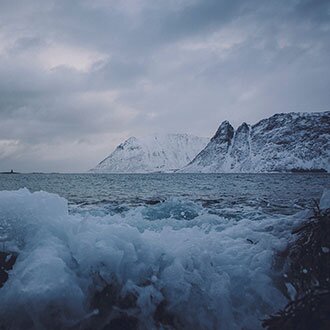Meet Tom-Jørgen Gangsø, our country representative in Italy.
Norway and the EU signed agreement on duty-free quotas
According to the new agreement, the EU will open 12 duty-free import quotas for Norwegian seafood.

Meet Tom-Jørgen Gangsø, our country representative in Italy.
Italy is an important market for Norwegian seafood, and the Norwegian Seafood Council is represented locally in Milan by our Country Director Tom-Jørgen Gangsø and our market advisor Jennifer Mazzilli.
Italians consume 29.6 kg of seafood per person per year, which is the eighth highest in Europe. Seafood competes with meat, which has nearly 2.5 times higher consumption than seafood. Tuna and salmon are among the most commonly eaten species in Italian households, followed by seabream and seabass. Italy is also Norway’s most important market for stockfish.
Over the past decade, Italy has become one of Norway’s most significant salmon markets, with an export value of NOK 6.4 billion in 2024. Smoked salmon is the most purchased product format for home consumption in Italy, closely followed by fresh salmon.
The total market for Atlantic salmon was 144 thousand tonnes, and Norway’s market share reached 91 percent in 2024. Norwegian salmon is valued for its taste, simplicity, and health benefits. When it comes to consumer awareness of origin, the Norwegian origin of smoked salmon is well known in Italy – but the origin of fresh Norwegian salmon is less recognized at the fresh food counter.
Italy has one of the largest, but also most fragmented, restaurant markets globally. Salmon is one of the most preferred species in restaurants, driven by the growing number of sushi and poké restaurants in the market.
While salmon is driven by modern trends, stockfish and saltfish hold an important place in traditional cooking. These products are often prepared at home by older generations or served in traditional Italian restaurants.
Italy is the largest market for Norwegian stockfish and saltfish, which they call "baccalà". Both products are struggling with declining consumption due to a shift toward other types of seafood, high prices, and changing consumer habits.
The total market for conventional products in Italy is estimated at 41 thousand tonnes in 2024, with Norway holding a 51 percent market share, followed by the Faroe Islands and Iceland. The Faroe Islands lead in baccalà, while Norway dominates in stockfish with a 100 percent market share.
Since both product categories have traditionally been considered low-cost food, they need to be repositioned to balance price with perceived quality and willingness to pay.
Future opportunities lie in product development, with more products that are easy to prepare. At the same time, these should be promoted through modern sales channels in larger cities to reach consumer groups that are currently difficult to recruit.
Norway’s seafood exports are based on a model that involves strict regulation, sustainability, and quality. This is something that origin labeling and marketing should help promote and will be important in positioning Norwegian salmon, stockfish, and baccalà as a good choice for Italian consumers.
According to the new agreement, the EU will open 12 duty-free import quotas for Norwegian seafood.
The Norwegian Seafood Council has so far published a weekly tariff overview showing the status of trade quotas to the EU. These weekly overviews will be replaced by our new quota overview starting from Friday, February 2, 2024.

Exporters can register via our website. The estimated time to process the application is around 1 week from the day of the application.
The Norwegian Seafood Council's office in Italy is located in Milan. The director in Italy is Tom Jørgen Gangsø.
Our marketing advisor in Italy is Jennifer Mazzilli.
Visit our consumer-oriented web page for Italy:
Via Cappuccini 2
20122 Milano
Italia

